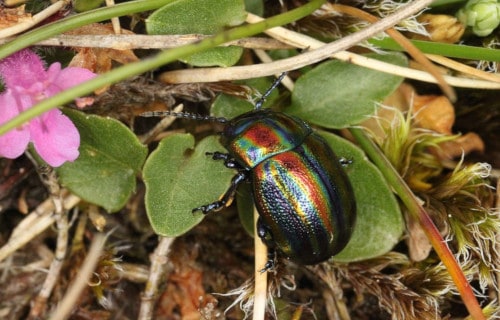
CCL: https://bit.ly/2sQieMu
We hope that you truly enjoy this article about Earth’s Many Astounding Beetles. As you will see herein, these amazing invertebrates come in a seemingly endless variety of shapes, colors, and sizes. Nature, it seems, loves variety, and so do we.
Creatures such as these evolved astonishing adaptations. Of course, the species mentioned here represent only a tiny handful of the more than 350,000 types of known beetles. But, we think these examples of Earth’s Many Astounding Beetles will whet your appetite for more.
Musk Beetle
Musk Beetle Facts
- Leading off our list of Earth’s Many Astounding Beetles is a rather odiferous one, the aptly named Musk Beetle.
- Firstly, the distinctive term serves as the name for a specific species of moderate-sized longhorn beetle. This rather fascinating insect evolved as solely endemic to a rather highly restricted portion of Europe.
- Secondly, this rather remarkable invertebrate derives its name from the odor it sometimes emits. However, it rarely does so unless it finds itself under threat. Most who encounter it describe it as a musky smell.
- Fortunately for this insect, a hopeful future appears to be on the horizon. That’s because conservation efforts have been put in place by various organizations in its endemic range, to help ensure its survival.
- Most notably, the Cornwall Wildlife Trust currently stands at the forefront of these wholly worthwhile efforts. Yet, it nevertheless remains at risk from such dangers as habitat loss and climate change, like many creatures.
Musk Beetle Physical Description
First of all, the Musk Beetle remains most easily distinguished by two defining characteristics. The first of these consists of its relatively long antennae. These stand out as much longer than average, compared to related species. Its antennae sometimes grow longer than the entire body of the insect. This averages about 1.6 in (4 cm).
And the second of these distinguishing factors consists of its remarkable color. That’s because the creature typically presents a bright metallic green color. However, although exceeding rare, the insect does occasionally develop other colors.
The fascinating species also exhibits a slight degree of sexual dimorphism, like many species. But, in its case, this trait typically occurs in relation to antennae length. Those of the female usually grow about the same length as the body. Yet, those of the male Musk Beetle generally develop slightly greater in length.
- Kingdom: Animalia
- Phylum: Arthropoda
- Class: Insecta
- Order: Coleoptera
- Family: Cerambycidae
- Genus: Aromia
- Species: A. moschata
Musk Beetle Distribution, Habitat, and Ecology
Most of all, the somewhat odiferous Musk Beetle occurs in several countries scattered throughout Europe. But, this particular insect most commonly appears in the country of Great Britain. However, even there, the numbers of this interesting invertebrate remain quite scarce.
The insect does present inhabit several types of habitat, though not in great numbers in any region. But, it does show a decided preference for wetland areas. In this environment, as well as in others, it also most commonly lives on the leaves of trees. Further, for undetermined reasons, it prefers leaves of willow trees.
In addition, it is in this location that the larvae of the species spends the majority of its life cycle. Also, this life cycle often happens to be rather prolonged, sometimes lasting as much as 3 years. In this, the invertebrate also stands out from most related species.
Elephant Beetle
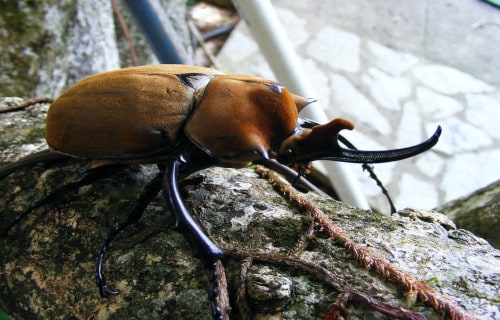
CCL: https://bit.ly/1iowB8m
Elephant Beetle Facts
- Next up in this article covering Earth’s Many Astounding Beetles is one with a hard to live up to name, the Elephant Beetle.
- First of all, the term forms the common name of a particular species of the scarab beetle. Furthermore, only 3 known subspecies of this rather impressive and extremely large and powerful insect currently exist.
- In addition, all currently known varieties of the remarkable invertebrate appear to have evolved as Neotropical creatures. The larval form of this enormous insect takes an astonishingly long time, for an insect, at least, to mature into adult individuals.
- In a hard-to-believe occurrence, it once served as the focus of an experiment sponsored by the Pentagon, in Washington, DC, in the United States. The experimented investigated the possibility of controlling its larval form remotely.
- Quite fortunately, unlike many related species, its numbers appear to be sufficient and stable across its endemic range. Therefore, the IUCN presently lists it as Least Concern. However, it nevertheless faces the potential threat of climate change, like all creatures on the earth.
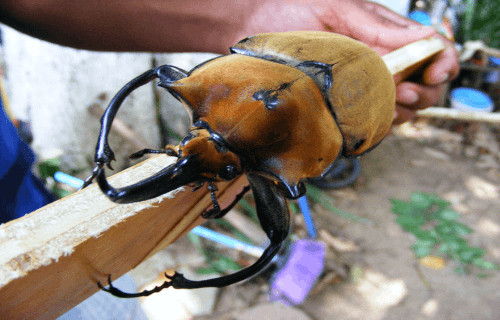
CC License: https://bit.ly/1iowB8m
Elephant Beetle Physical Description
Firstly, the truly amazing Elephant Beetle presents a rather significant degree of sexual dimorphism. In this instance, this natural principle displays itself in two ways. One of these happens to be in the variation of physical size between the genders.
Secondly, this holds true due to the fact that the males of this species attain an enormous size in relation to the females. That’s because males achieve average lengths of as much as 4.75 in (12 cm). Meanwhile, females only average about 1.6 in (4.1 cm).
But, yet another form of sexual dimorphism makes itself known in this arthropod in terms of physical appearance. This occurs due to the fact that the males possess two large horns. Yet, the smaller females of this fascinating species display no horns at all.
Finally, the legs and body of this giant among insects typically appear as black in color. However, the exoskeleton of the Elephant Beetle remains covered with a rather think layer of fine hairs. These serve as the source of its often-perceived yellowish-brown color.
- Kingdom: Animalia
- Phylum: Arthropoda
- Class: Insecta
- Order: Coleoptera
- Family: Scarabaeidae
- Genus: Megasoma
- Species: M. elephas
Elephant Beetle Distribution, Habitat, and Ecology
Most notably, the amazing Elephant Beetle appears to be endemic to portions of Australia, Mexico, Central America, and South America. Within that territory range, it most commonly inhabits regions of rainforest. This remains especially true of the mighty Amazon rainforest. It truly earns its listing as one of Earth’s Many Astounding Beetles.
Normally, this creature, both the adult and larval forms, inhabits virtually all portions of this region. However, deforestation has greatly reduced its available habitat. But, where possible, it still attempts to survive in areas of the heavy foliage typical of such regions.
In addition, the larvae of this astonishing insect primarily occur in large, decaying logs. Quite surprisingly, though, these sometimes take as long as 3 entire years to mature into adults. During this time, the individual specimens feed rather voraciously on the decaying wood.
Finally, the average lifespan of an adult Elephant Beetle only measures between 1 – 3 months. Thus, it spends the majority of its life as a larva. The adults prefer to feed on the sap of particular trees, as well as various fruits and tree bark. It also lives a primarily nocturnal life.
Salt Creek Tiger Beetle
Goldsmith Beetle Facts
- Placing third among our selections of Earth’s Many Astounding Beetles comes the awesome but rarely seen Salt Creek Tiger Beetle.
- Though undeniably lengthy, the term for this particular beetle represents the common name for a remarkable invertebrate. Despite its length, that term actually remains more easily pronounced than that of the scientific name of the species.
- That’s because it bears the official name of the Cicindela nevadica lincolniana. By either of these tongue-twisting names, however, it has a singularly impressive story. Sadly, though, researchers still know very little about most of its life cycle.
- First identified as a separate species in the early 20th century, no real study of it occurred until the mid-1980’s. At that time, though, a local university undertook the task of making the first detailed study and survey of the creature and its population.
- Currently, its known population remains unknown, but totaled only 365 individuals in 2013. Despite this, the IUCN does not currently have a listing for the remarkable insect. It is, however, listed as Endangered by the country in which it appears.
- Given such scant numbers, the impressive Salt Creek Tiger Beetle must be considered to be facing many severe risks to is existence. Habitat loss remains a serious danger, of course. Its greatest, though, most likely consists of the effects of climate change.
Salt Creek Tiger Beetle Physical Description
While the awesome Salt Creek Tiger Beetle remains a highly remarkable species, it doesn’t hold that status due to its sheer physical size. In point of fact, this scientifically fascinating arthropod actually ranks as only a small-to-moderate sized form of beetle.
It does, though, like many of its kind, display a slight degree of the physiological characteristic of sexual dimorphism. In the case of this specific invertebrate, though, this trait manifests itself in terms of something other than size of coloring.
Males possess a thin covering of fine white hairs on the body and legs. Their female counterparts, however, completely lack this feature. In all other respects the genders appear virtually indistinguishable, with an appearance quite different from most related species.
Precise coloring of the Salt Creek Tiger Beetle varies between individuals. This mainly consists of shades of metallic brown to a dark olive green on the upper side. On the bottom, though, the creature generally displays a dark metallic green shade, but variations exist.
- Kingdom: Animalia
- Phylum: Arthropoda
- Class: Insecta
- Order: Coleoptera
- Family: Carabidae
- Genus: Cicindela
- Species: C. nevadica
Salt Creek Tiger Beetle Distribution, Habitat, and Ecology
Quite sadly, the amazing Salt Creek Tiger Beetle presently has an incredibly limited zone of habitation. In point of fact, all known specimens of this amazing insect appear in a tiny, and very specific, portion of the country of the United States, in North America.
More precisely, the entirety of its known range only includes one area in the norther third of a single county, in Nebraska. Despite intensive study in recent years, it remains unknown if its natural range ever extended much beyond parts of a neighboring county, if at all.
But even within this already incredibly limited area of habitation, it only appears in a few isolated locations. These consists solely of the banks of Salt Creek, and its associated streams and wetlands. This understandably serves as the source of the common name for it.
Among the limited data available on the aptly-named Salt Creek Tiger Beetle is information regarding its feeding habits. Regardless of its small size, the impressive insect represents a powerful carnivore, at least among insects within its own size range.
Given that, it tends to remain near its burrow, waiting to pounce on unsuspecting prey as it passes by. It seems to feed indiscriminately on any insect of sufficiently small size that comes within reach of the relatively powerful mandibles Nature provided it.
Individuals further appear to spend most of its roughly 2-year lifespan underground. It comes out for only around 6 weeks, from June to July each year. During this time it mates, and the female lays here eggs along sloping banks, in the salty mud of the region.
Coral Pink Sand Dune Beetle
Coral Pink Sand Dune Beetle Facts
- While the name of our next choice of Earth’s Many Astounding Beetles, the Coral Pink Sand Dune Beetle, may be bulky, the insect itself is not.
- Most notably, the truly amazing beetle inhabits an extremely limited range. The fascinating species also occurs only in a portion of one specific geologic feature. That remains one known as the Coral Pink Sand Dunes, in southern Utah, in the United States.
- Furthermore, due to the combination of such limited range and small numbers, this insect now lists as Critically Endangered with the IUCN. In addition, estimates currently place the total current population of this spectacular invertebrate at fewer than 2,000 individuals.
- Finally, it also spends the entirety of its life in one tiny area, moving very little. Typically this location consists of the same individual sand dune. Further, the majority of individuals actually venture less than 1,000 ft (300 m) from the spot where they hatched from their eggs. Truly, this remains one of Earth’s Many Astounding Beetles for an excellent reason.
Coral Pink Sand Dune Beetle Physical Description
Firstly, much as with many insects, the Coral Pink Sand Dune Beetle displays the principle of sexual dimorphism. In its case, like many insects, females typically attain a larger size than males. However, both genders remain tiny. That’s because an overall average body length measures slightly less than 0.5 in (12 mm).
Further, although small, the coloring of the magnificent creature remains rather striking. Also, the body generally appears as either brown or bronze in color. Furthermore, the upper thorax possesses a metallic sheen, making for a truly striking appearance.
While the wing cases usually remain concealed, these appear as a brilliant white. Also, the eyes develop rather large in comparison to other beetles of its size. In addition, the legs grow relatively long, to keep the body away from the hot sand.
But, its most noteworthy feature, however, remains the presence of numerous bright white hairs. These fascinating features line much of the body and legs. Researchers have theories as to the reason for this trait, but have reached no definitive conclusion.
- Kingdom: Animalia
- Phylum: Arthropoda
- Class: Insecta
- Order: Coleoptera
- Family: Carabidae
- Genus: Cicindela
- Species: C. albissima
Coral Pink Sand Dune Beetle Distribution, Habitat, and Ecology
First of all, the Coral Pink Sand Dune Beetle evolved as endemic to Utah, in the United States, in North America. Even more specifically, the species only inhabits the Coral Pink Sand Dunes geologic feature. This, quite understandably, serves as the source of the common name.
The color of the sand dunes it evolved as native to remains quite unique. It also forms the reason the invertebrate evolved its own distinctive coloring. With its limited numbers and extraordinarily restricted habitat, survival of every individual is of paramount importance to the species.
In addition, mating occurs in the spring, and the larvae reach adulthood the following spring. The remarkable small creature also evolved as entirely carnivorous. Mature adults primarily prey upon flies and other small arthropods they can catch on the dunes.
Larvae remain in small burrows and feed on any small arthropod that wanders by. The primary threats to its existence include habitat loss due to climate change. But, the use of recreational vehicles such as buggies on the dunes also poses a sever threat.
Fortunately, its habitat lies within part of the Coral Pink Sand Dunes State Park. The use of buggies in the region the fabulous species inhabits has now been banned by the U.S. Fish and Wildlife Service. But, the impact of this on its numbers remains undetermined at this time.
Tansy Beetle
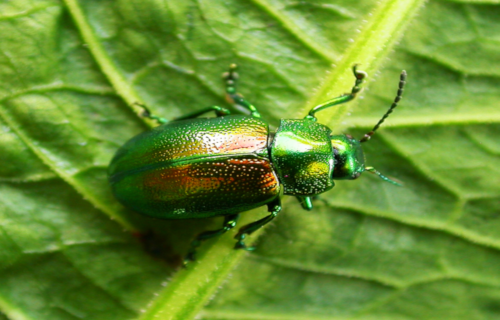
CCL: https://bit.ly/35h8Cc8
Tansy Beetle Facts
- Our fifth choice for inclusion in this compendium of Earth’s Many Astounding Beetles is the wonderful Tansy Beetle.
- Most notably, the wonderful species with the common name of the Tansy Beetle ranks as an extremely rare insect. Quite sadly, the numbers of this remarkable invertebrate also appear to continue to be dropping at an alarming rate.
- However, recovery efforts have now been put into place by various groups within its native habitat range. These ongoing efforts include regular population surveys, as well as attempts at controlling several invasive species that threaten it.
- First identified in 1758, by Carl Linnaeus, the fascinating creature forms one member of the large genus, Chrysolina. Given the rather lamentable facts pertaining to its numbers, it may soon, if current trends continue, become extinct.
- Because of all these facts, the IUCN quite understandably lists the marvelous species as Endangered. While it faces several threats to its existence, a few stand out. These include habitat loss and changing climate, like many species around the world today. This example of Earth’s Many Astounding Beetles desperately needs our help.
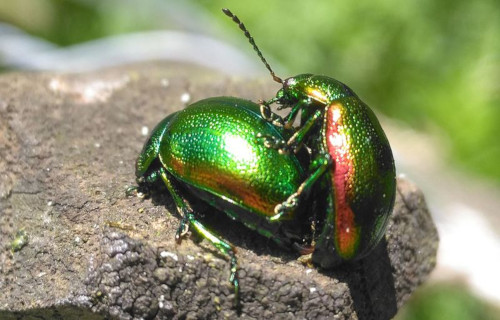
CCL: https://bit.ly/2LSnRAy
Tansy Beetle Physical Description
Though the Tansy Beetle stays rather diminutive, it nonetheless appears quite beautiful. This interesting species also exhibits a small degree of sexual dimorphism. First of all, the female only attains an average length of 0.3 in (7.6 mm). Meanwhile, the male reaches a length slightly less than the female.
In addition, most individuals primarily appears a bright green in color. However, multiple patterns of the colors red, yellow, and orange display as well. The exoskeleton also displays a bright metallic sheen, further enhancing its distinctiveness.
Furthermore, its wings grow quite small and remain quite underdeveloped, compared to most related species. Therefore, as a result, the Tansy Beetle moves by crawling instead of flying. But, its multi-jointed legs provide it with an excellent grip.
- Kingdom: Animalia
- Phylum: Arthropoda
- Class: Insecta
- Order: Coleoptera
- Family: Chrysomelidae
- Genus: Chrysolina
- Species: C. graminis
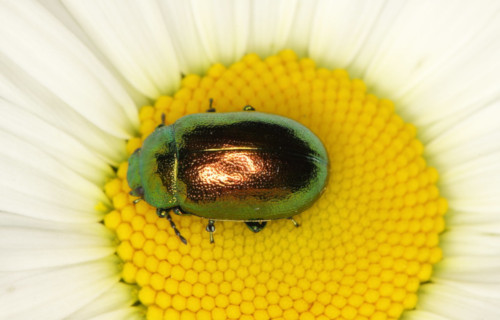
CCL: https://bit.ly/2LSGvbm
Tansy Beetle Distribution, Habitat, and Ecology
Surprisingly enough, the Tansy Beetle actually resides across a rather wide swathe of Europe. Since the middle of the 20th century, however, its numbers have declined rapidly. Consequently, it now only lives in widely scattered small concentrations.
The choice of habitat for this amazing arthropod remains simple, yet simultaneously complicated. That’s because it has a special relationship with a handful of certain plants. This holds particularly true for the tansy plant, thus forming the origin of its common name.
Essentially, however, in the regions it still exists in, it can appear tansy, fen, and water mint, and a few others plants appear. Individuals generally spend their entire lives either on or around an isolated clump of Tansy, or one of the other select plants it prefers.
These plants then serve as both food and shelter, for both the larvae and the adults. These particular plant varieties most commonly appear either in areas of wetland, or beside riverbanks. Usually, adults feed, mate, and lay their eggs entirely on the tops of plants, and then the larvae consume the leaves.
Blue Death Feigning Beetle
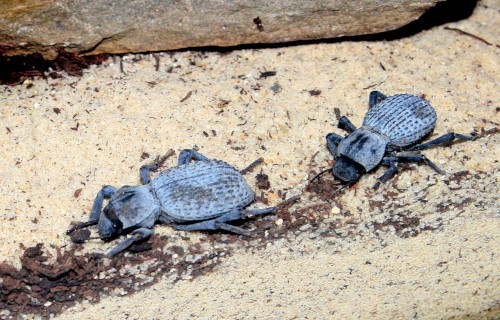
CCL: https://bit.ly/1E6HPM
Blue Death Feigning Beetle Facts
- The next of our selections for inclusion in this article about Earth’s Many Astounding Beetles is the incredible Blue Death Feigning Beetle.
- First of all, the somewhat lengthy name remains rather unique, to put it mildly. However, the term also serves as perfectly fitting, and descriptive. The attention-grabbing, if lengthy, term certainly seems more poetic than the scientific name of Asbolus verrucosus.
- Yet sadly, for the moment, scientists studying the incredible invertebrate do not know much about this insect. This fact comes as something of a surprise, given recent developments. That holds true due to the fact that the species is rapidly becoming quite popular in the pet trade.
- Further, the common name derives from the combination of two factors. The first remains fairly obvious, that being its natural color. But the second factor remains the remarkable behavior of the species. When threatened, it reacts in a way the name implies, literally pretending to be dead.
- Finally, for the moment, its numbers in the wild appear to be reasonably stable. Therefore, the IUCN does not currently have a listing of the species. However, it doubtless faces the same potential threats as many other species with similar habitats. These include habitat loss and climate change.
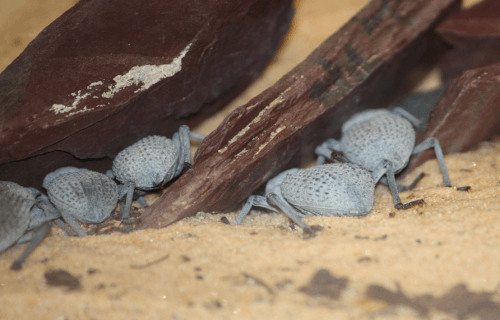
CCL: https://bit.ly/1p2b8Ke
Blue Death Feigning Beetle Physical Description
Perhaps most notably, the remarkable Blue Death Feigning Beetle is actually black in color. But, a simple explanation clarifies the confusion over its coloring. The blue comes from a chemical coating that it secretes from its body at will.
But, such a rather interesting adaptation does serve a fully functional purpose, however. This coating serves to protect it from the harmful effects of sunlight. Given the heat and aridity of its native environment, this is a vital evolutionary trait.
Further, this rather fascinating invertebrate also remains quite small in size. A total overall length averages between 0.7 – 0.8 in (18 – 21 mm). The species does display sexual dimorphism, but only to a very small degree. Males average about 0.5 mm smaller in size than the females of the species.
- Kingdom: Animalia
- Phylum: Arthropoda
- Class: Insecta
- Order: Coleoptera
- Family: Tenebrionidae
- Genus: Asbolus
- Species: A. verrucosus
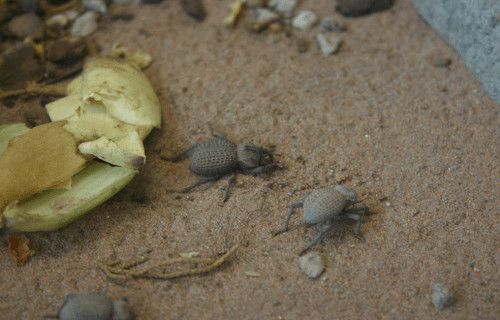
CCL: https://bit.ly/1ryPA8o
Blue Death Feigning Beetle Distribution, Habitat, and Ecology
The truly remarkable Blue Death Feigning Beetle evolved as endemic to the desert regions of North America. Furthermore, the great majority of its population appears in the northwest section of the continental United States.
There, it shows definite preferences for its choice of habitat. Given the nature of its environment, this represents a vital necessity. As a result, it typically appears crawling either on or around the protective shelter of sand dunes.
In addition, although it hunts by both day and night, it remains primarily nocturnal. The fascinating creature also appears to be an opportunistic feeder. As a result, it principally consumes a variety of plants, as well as any carrion available.
Finally, the remarkable Blue Death Feigning Beetle also appears to be extremely long-lived compared to related species. That’s because it can live for as long as ten years. Unfortunately, this only serves to make it even more popular as an exotic pet.
American Burying Beetle
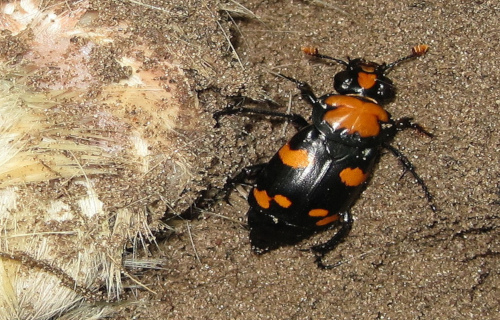
CCL: https://bit.ly/36yztkc
American Burying Beetle Facts
- Our seventh choice for entry into this compendium of Earth’s Many Astounding Beetles is the aptly named American Burying Beetle.
- First of all, the commonly used term serves as the much more pronounceable name for the Nicrophorus americanus. This truly fascinating invertebrate remains notable for several reasons, not all of them good. Unfortunately, not all of them qualify as good reasons for notoriety.
- First of all, this fascinating creature remains known among researchers for its surprising approach to parenting. That’s because it represents one of the few known varieties of beetle to actually display parental care for the offspring. The vast majority of related species do not practice this trait.
- Secondly, and sadly, it also deserves attention for an unfortunate fact. That holds true due to the fact that this arthropod continues to rapidly disappear in the wild. Its endemic range once covered much of North America. But now, it only inhabits a tiny fraction of its former range.
- Due to its rapid and continued decline in population, the IUCN presently lists it as Critically Endangered. The arthropod faces numerous threats, including such factors as habitat loss and invasive species. However, its greatest threat now consists of climate change.
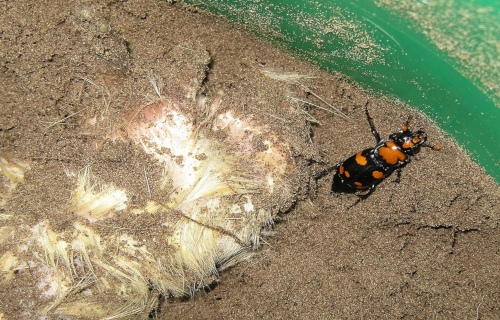
CCL: https://bit.ly/2LRyOCm
American Burying Beetle Physical Description
Perhaps most notably, the American Burying beetle ranks as relatively large. That’s because adults average around 1.5 in (3.8 cm) in length. In addition, it also ranks as unusual because it displays no noticeable degree of sexual dimorphism.
The bodies of both genders predominantly appear as black in color. Furthermore, most typically two bright orange-red bands appear on each wing cover. These also usually possess a somewhat scalloped shape to their structure.
Additionally, another structure behind the head resembles a shield. This structure also usually appears as orange with black edges. In addition, each antenna remains topped with a small patch of orange. The combined effect creates a rather striking appearance.
- Kingdom: Animalia
- Phylum: Arthropoda
- Class: Insecta
- Order: Coleoptera
- Family: Silphidae
- Genus: Nicrophorus
- Species: N. americanus
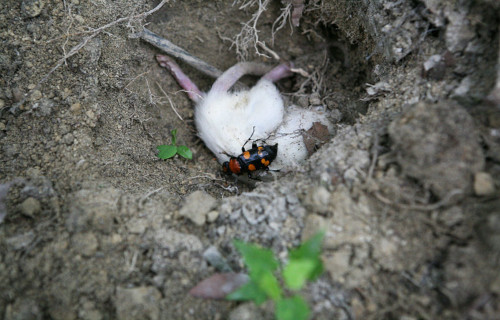
CCL: https://bit.ly/2YKLfoC
American Burying Beetle Distribution, Habitat, and Ecology
Having evolved as native to North America, the amazing American Burying Beetle once inhabited a vast territory. Now, however, that range has been drastically reduced. That’s because it only appears in five states, in the United States, and the Canadian province of Ontario.
This incredible beetle does appear to be able to adapt to numerous habitat types, however. As a result of this evolutionary advantage, specimens inhabit grasslands, prairies, forests, and scrubland. But, it does show a slight preference for regions of grassland.
The species apparently has specific criteria for where it lives. That holds true due to the fact that evidence indicates that the availability of adequate carrion plays a greater role than does the nature of the environment. Food and hatching place above all other factors.
Furthermore, like some similar species, this insect evolved as entirely carnivorous. While it will attack prey if necessary, it prefers to feed almost exclusively on carrion. The ready availability of this resource plays a key factor in its choice of habitats.
Males strive to locate a suitable carcass, typically something around the size of a bird and then attract a mate. After mating, the pair buries the carcass, and the female lays eggs adjacent to it. Once the eggs hatch, both parents tend the young. This example of Earth’s Many Astounding Beetles remains one of the few of which this holds true.
Goliath Beetle
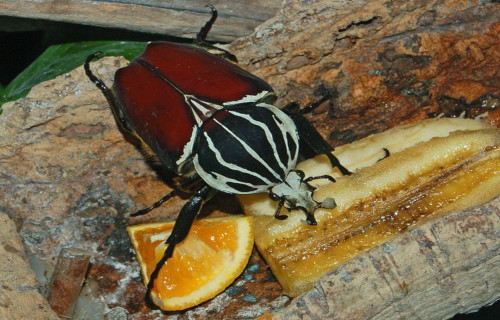
CCL: https://bit.ly/2PhuVc6
Goliath Beetle Facts
- Here we present our next species in this compilation of Earth’s Many Astounding Beetles, the perfectly named Goliath Beetle.
- Most notably, the truly phenomenal Goliath Beetle truly earns its attention-grabbing common name. That’s because this fabulous arthropod easily ranks as one of the largest and heaviest insects currently known to man. However, the highly descriptive term applies to a total of five separate, but quite similar, species contained in the genus Goliathus.
- Yet surprisingly, scientists continue to remain uncertain about certain aspects of its life in the wild. These aspects, such as the activity of enormous larvae, have been observed in captivity, but infrequently in the wild. Therefore, researchers cannot reliably state that the same pattern of behavior remains the same for the larval form in both conditions.
- The various species in the genus also distinguish themselves from other related species in another manner. That’s because, unlike many similar creatures, all known forms of the Goliath Beetle appear to be maintaining relatively stable population bases. Therefore, for the moment, at least, the IUCN has no listing for any member of the genus. But, ongoing climate change could potentially threaten it, like all species.
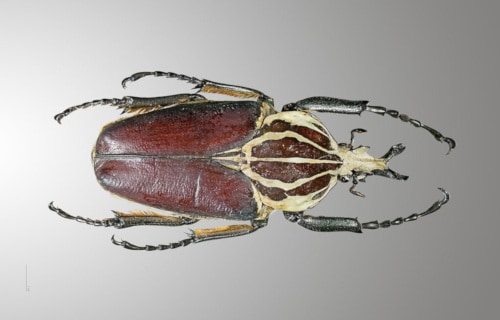
CCL: https://bit.ly/2s97Sr5
Goliath Beetle Physical Description
Like most beetles, the Goliath Beetle possesses a reinforced first pair of wings. These serve as protective covers for its secondary pair of wings and abdomen. The second pair of wings is membranous and quite large. Only that pair remains useful for flying. When not in use, it keeps these folded beneath the first pair of wings.
In addition, each of the legs of the mammoth insect ends in a pair of sharp claws. These growths provide it with a strong grip for climbing on tree trunks and branches. These also provide another manner of self-defense against potential predators.
The species also displays a form of sexual dimorphism. The males have a large, Y-shaped horn on the head that serves principally as a pry bar in battles. It often uses these against other males over feeding sites or when vying for potential mates.
Meanwhile, the females remain hornless in this species. Instead of a horn, Nature provided this gender with the presence of a wedge-shaped head. This evolutionary development provides assistance in burrowing when laying their eggs.
The Goliath Beetle attains a length of as much as 4.3 in (10.9 cm), for males. Females of the species develop slightly smaller and can reach weights of up to 3.5 oz (99.2 gr) in their larval stage. As adults, however, individuals only reach about half this weight.
- Kingdom: Animalia
- Phylum: Arthropoda
- Class: Insecta
- Order: Coleoptera
- Family: Scarabaeidae
- Genus: Goliathus
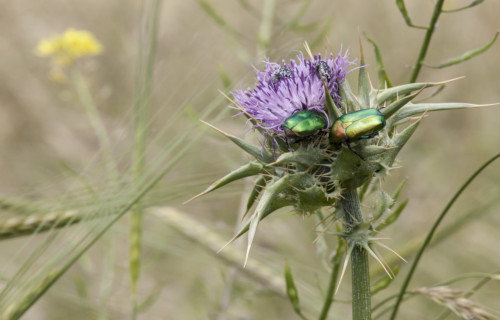
CCL: https://bit.ly/2EbK6gu
Goliath Beetle Distribution, Habitat, and Ecology
Perhaps it will come as no surprise to learn that all the species that form types of the Goliath Beetle evolved as native to the continent of Africa. There, the various members of the genus appear in many countries and regions across the continent.
However, it shows a decided preference for certain types of habitat and environment. That’s because the great majority of both species and individuals inhabit regions of tropical forest. It does appear in other habitats, but only infrequently.
This enormous invertebrate evolved as strictly herbivorous in nature. As a result, it feeds primarily on the fruits of various trees endemic to its particular region. However, it also enjoys feeding on the sap of the same trees.
The larvae of this group remain rather unusual among beetles. That’s because it possesses a greater need for high protein foods than most other genera. This holds true due to the enormous size of the larva. These may reach a length of as much as 9.8 in (25 cm). Sadly, the adults rarely live more than a single year.
Rainbow Leaf Beetle

CCL: https://bit.ly/2sQieMu
Rainbow Leaf Beetle Facts
- The ninth of these stunning choices to represent Earth’s Many Astounding Beetles is the gorgeous Rainbow Leaf Beetle.
- Firstly, the term serves as the common name for the gorgeous Chrysolina cerealis. But, this stunning invertebrate also goes by another common name. That holds true because it also goes by the name of the Snowdon Beetle. Whatever name one calls it by, it ranks as one of the most dazzling insects of its type in the world.
- However, this remarkable insect also finds itself in a situation similar to an increasing number of other species in the world. That’s because, while it inhabits a rather broad range, and in moderately large numbers, it finds itself threatened in certain individual regions of its endemic range. This terrible situation also continues to deteriorate.
- Therefore, though the IUCN does not presently have a listing for it, the local population in the United Kingdom now lists as Endangered. Further, the dangers it faces vary from region to region, as well as relative threat levels. But, one severe, and increasing, danger it faces in all parts of its range remains the global threat of climate change.

CCL: https://bit.ly/2RIXnoR
Rainbow Leaf Beetle Physical Description
Most notably, regardless of its extremely beautiful appearance, the Rainbow Leaf Beetle nevertheless remains a physically small variety of insect. Like many related creatures, it also displays a moderate degree of the principle of sexual dimorphism.
Furthermore, in its case, this occurs in the matter of sheer physical size. As a result, the females generally attain an overall body length of about 0.39 in (10 mm). Meanwhile, the significantly smaller males only reach an average length of around 0.22 in (5.5 mm).
However, its most remarkable characteristic, and the one that inspired its common name, remains its brilliant color scheme. While the exact pattern of coloring varies, the same colors predominate. These stunning colors include metallic blue, green, and red, with the presence of several longitudinal stripes as well.
- Kingdom: Animalia
- Phylum:Arthropoda
- Class: Insecta
- Order: Coleoptera
- Family: Chrysomelidae
- Genus: Chrysolina
- Species: C. cerealis
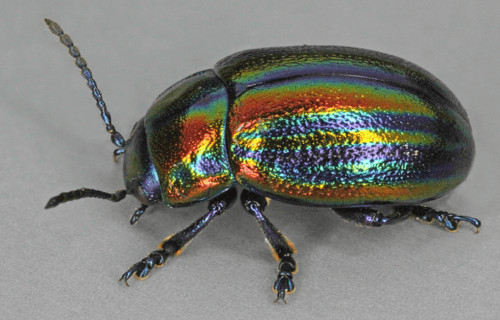
CCL: https://bit.ly/1ryPA8o
Rainbow Leaf Beetle Distribution, Habitat, and Ecology
The truly magnificent variety of Eurasian leaf beetle known as the Rainbow Leaf Beetle evolved as native to a specific region. But, that specific range also qualifies as somewhat large. It inhabits areas from Norway to northern Italy, from Ussuri in the east, and also Wales in the west.
It does have one factor going for it, though, in regards to its survival. That’s the fact that it possesses a high degree of adaptability in regards to its habitat. That’s because the insect inhabits areas of woodlands, forests, wastelands, meadows, and montane grasslands. This includes altitudes of up to as much as 1,968 ft (600 m).
It most commonly appears between the months of April and September, throughout its endemic range. It also lives in a harsh habitat, usually consisting of rocky areas known as scree. Both the larvae and the adult feed on several types of plants, generally preferring the flowers over the foliage.
Click Beetle
Click Beetle Facts
- The next of our selections for posting in this article on Earth’s Many Astounding Beetles is known simply as the Click Beetle.
- Perhaps most notably of all, the distinctive term serves as the common name for any insect in the Family of Elateridae. There also appear to be about 7,000 known species within this family. These remarkable insects evolved and live on every continent except Antarctica.
- Furthermore, the common name of the numerous species in the group derives from a rather obvious source. That’s the unique and surprising sound individuals generate. Nature provided these animals with a method of producing a sound that closely resembles a clicking noise.
- The quite fascinating Click Beetle makes its namesake noise through a conscious act of movement. In fact, the insect does this by violently snapping its spine into a specially evolved notch on its mesosternum.
- Also, the distinctive small invertebrate principally uses this clicking sound to stave off attacks from potential predators. However, the action also gives the insect the ability to flip into the air, if it finds itself on its back. This provides it with an advantage over many of Earth’s Many Astounding Beetles.
Click Beetle Physical Description
Firstly, given the incredible number of species in its Family, physical appearances among the different varieties of Click Beetle vary significantly. Secondly, however, general similarities between the various members of the enormous still remain.
In fact, only a relative a few members of this remarkable Family display bright colors. In addition to this, a few types grow to a relatively large size. However, most varieties throughout the world attain a measurement of less than 0.8 in (2 cm) in length. Also, some display sexual dimorphism, while others do not.
Further, and quite amazingly, the variety of Nature led to a few others actually evolving to be bioluminescent. But, the color patterns of most members of this truly impressive Family of invertebrates consist of various dull shades of black or brown.
- Kingdom: Animalia
- Phylum: Arthropoda
- Class: Insecta
- Order: Coleoptera
- Family: Elateridae
Click Beetle Distribution, Habitat, and Ecology
Possessing an almost global distribution, various forms of Click Beetle exist on all continents, except Antarctica. Not only that, but nearly 1,000 varieties appear in North America alone, especially scattered throughout portions of the United States.
The fascinating creature also evolved to be quite adaptable. As a result, it thrives in a wide variety of climates and habitats. These include both temperate and tropical. However, the majority of species exist in temperate climates, especially in forests.
An adult Click Beetle remains primarily nocturnal in nature. In this, it follows a common pattern among similar insects. The majority of forms of this arthropod typically feed at night. In all portions of its range, it consumes a wide variety of local plant life.
But, the larvae usually feed on various inert organic matter. In some instances, and among some species, the larvae constitute a concern for crops. These larvae normally spend 3-4 years beneath the soil before emerging as adults, often damaging the crops of farmers.
Titan Beetle
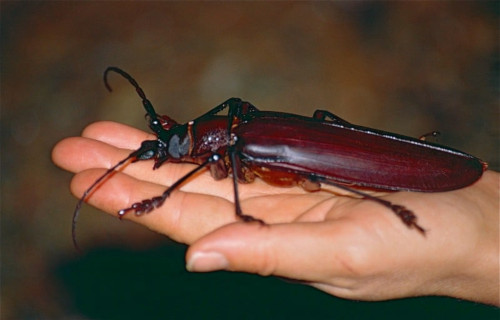
CCL: https://bit.ly/1jxQJMa
Titan Beetle Facts
- Coming in at number eleven in this listing of Earth’s Many Astounding Beetles is the awesome insect known as the Titan Beetle.
- First of all, the astonishing insect truly lives up to its common name. That holds true due to the fact that it ranks as the largest known variety of beetle on earth. Though many people believe it resembles a large cockroach, the invertebrate nevertheless remains a true beetle.
- Furthermore, this amazing invertebrate also has a rather mysterious side to it, as well. That’s because, despite years of effort by countless researchers, its life cycle remains undetermined. The reason for that ongoing mystery is that no larvae for it have ever been found.
- The creature also remains extremely strong for its size. Therefore, researchers must practice great caution when handling it. While not overtly aggressive by nature, its powerful mandibles can snap pencils. These can even pierce human flesh rather painfully.
- Additionally, as generally holds true for many tropical species, this remarkable and mysterious creature now faces serious danger. The Titan Beetle faces several dangers, including the threats of habitat loss and deforestation. But its greatest comes from climate change.
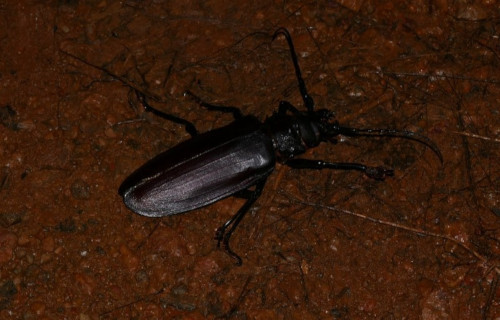
CCL: https://bit.ly/1jxQJMa
Titan Beetle Physical Description
The adult Titan Beetle attains a truly enormous size for an insect. That’s because its body length reaches as much as 6.5 in (16.7 cm). In fact, only the Hercules Beetle attains a greater length. However, much of the length of that animal is comprised of its large horn. It also shows no noticeable sign of sexual dimorphism.
In addition, multiple boreholes found under fallen trees suggest, however, that the larva may attain even greater sizes than the adults. Based on uncovered evidence, researchers estimate that these unseen larvae may reach lengths of as much as 12 in (30 cm).
The majority of individuals typically present a color pattern mainly consisting of various shades of a dark, reddish-brown. However, certain small sections of its body and antennae often display an extremely dark brown, almost to the point of appearing as black.
Meanwhile, the short, curved mandibles of the Titan Beetle develop into extremely powerful tools and weapons. Furthermore, in the native environment of the insect, this aids both in self-defense and its feeding. It also develops sharp spines on each of its multi-jointed legs.
- Kingdom: Animalia
- Phylum: Arthropoda
- Class: Insecta
- Order: Coleoptera
- Family: Cerambycidae
- Genus: Titanus
- Species: T. giganteus
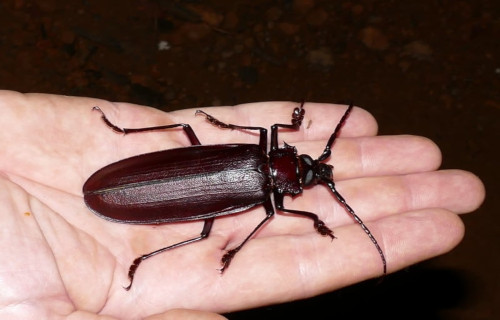
CCL: https://bit.ly/1jxQJMa
Titan Beetle Distribution, Habitat, and Ecology
The truly amazing Titan Beetle, representing the only species in the genus Titanus, has a highly specific habitat type and range. That holds true because this enormous insect also appears to only be endemic to areas of tropical rainforest in certain portions of South America.
Entomologists believe that the larvae stay underground and feed on decaying wood. Evidence indicates this period may last for years. But, once it reaches adulthood and emerges, the adults emerge, mate, and live for only a few weeks. Further, during this time the adults do not feed at all.
This impressive insect also appears to be extremely reclusive.and pacifistic in nature. However, it remains capable of inflicting a dangerous bite if handled. Defensive strategies include biting with the powerful jaws. Most commonly, this action is also preceded by loud hissing noises.
Perhaps most surprising of all is the fact that, despite its rather great size, it still remains capable of short flights. But, due to the energy required, it rarely does so. Finally, while it lives, the adult form of the beetle remains entirely nocturnal in nature. In this, it lives the same pattern as quite a few of Earth’s Many Astounding Beetles.
Scarab Beetle
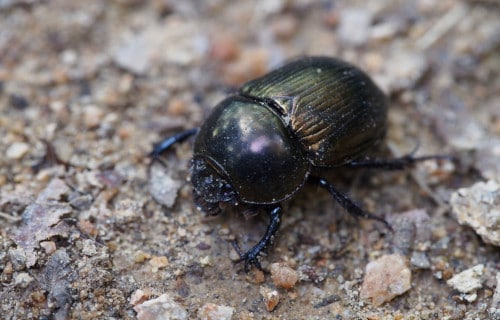
CCL: https://bit.ly/1jxQJMa
Scarab Beetle Facts
- The twelfth of the amazing creatures chosen for this list of Earth’s Many Astounding Beetles is the awesome Scarab Beetle.
- Most notably, the surprisingly fascinating arthropod constitutes one of the largest of all known insect families. That facts holds true because, worldwide, more than 30,000 identified species exist. Further, experts theorize thousands more may remain undiscovered.
- This rather fascinating invertebrate also represents a typical example of a specific type of beetle. That specific type is known to entomologists as a coprophagous beetle. These species form the group of beetle varieties known for their habit of collecting dung into balls.
- Furthermore, its habit of rolling the ball of dung along the landscape played a role in history. That’s because it inspired the ancient Egyptians in their religious beliefs. This ancient culture actually correlated this behavior with that of their Sun god Khepri moving across the sky. Accordingly, they also considered the insect to be sacred.
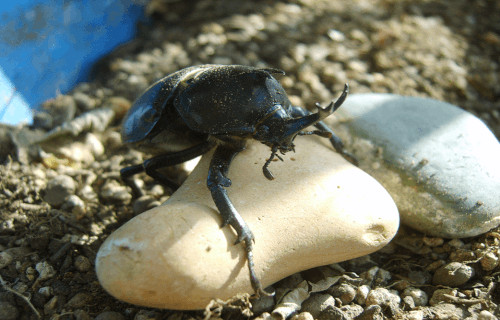
CCL: https://bit.ly/1p2b8Ke
Scarab Beetle Physical Description
First of all, given the sheer number of types of Scarab Beetle, many physical variations exist. However, certain basic traits remain consistent throughout the large group. Most noticeably, all types possess a compact body that displays a roughly oval and robust shape.
Also, this family of invertebrates can most easily be distinguished by one specific physical feature. That’s the presence of unusually formed antennae, compared to other varieties of beetle. Further, these end in three flattened plates that fit together, forming a small club.
Most varieties also typically attain a length of roughly 1.5 in (3.8 cm) and show no noticeable degree of sexual dimorphism. The majority of the different types also present remarkably similar color patterns. These mainly consist of various shades of brown and black in color.
- Kingdom: Animalia
- Phylum: Arthropoda
- Class: Insecta
- Order: Coleoptera
- Family: Scarabaeidae
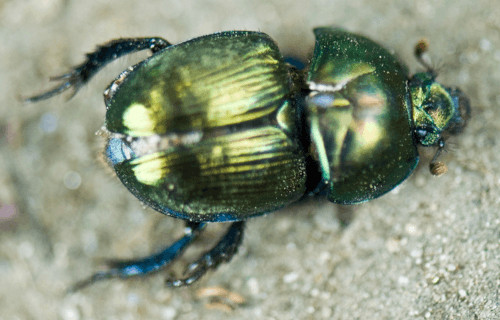
CCL: https://bit.ly/1jxQJMa
Scarab Beetle Distribution, Habitat, and Ecology
Perhaps most importantly of all remains the range of various members of the Scarab Beetle family. That’s because the Family possesses a worldwide distribution. Also, in fact, various species inhabit virtually every temperate and tropical region of the world.
Again understandably, the habitat requirements vary significantly. However, although its habitat varies, depending on the species, the majority inhabit arid regions, such as deserts. Only a relatively small percentage evolved as native to other types of climate.
The female Scarab Beetle digs a deep, pear-shaped chamber in which to place a ball of dung. After mating, she lays a single egg in each chamber, prior to sealing it. Upon hatching, the larva ravenously feed on the ball of dung left behind.
The female of each species also repeats this process as often as possible, to ensure the survival of the species. However, a single female rarely produces more than 6 offspring that survive. This occurs due to a variety of reasons, including climate and predation. Very few of Earth’s Many Astounding Beetles have such a low survival rate among the young.
Golden Tortoise Beetle
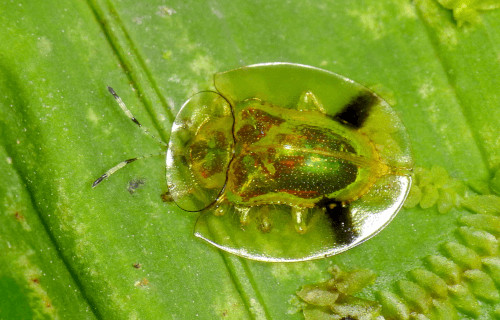
CCL: https://bit.ly/1iowB8m
Golden Tortoise Beetle Facts
- The next of these examples of Earth’s Many Astounding Beetles is a true treasure, the uniquely named Golden Tortoise Beetle.
- Perhaps most notably, the fascinating invertebrate represents a rather incredible looking insect. Further, entomologists presently classify it as a member of the leaf beetle family. Also, this gorgeous natural marvel of Nature remains native to a specific portion of the Northern Hemisphere.
- Fascinatingly, it also developed a very special relationship with certain flora. That’s because the unique invertebrate evolved to feed only on a specific family of plants, the Connolvulaceae. This family includes several species, including morning glories, bindweeds, and sweet potatoes.
- In fact, both the larvae and the adults feed on the foliage of these species exclusively. While not unknown, this characteristic remains uncommon enough to garner great interest among researchers. This case, therefore, makes for a rather fascinating example of coevolution.
- The species does not yet hold a listing by the IUCN on its Red List of Threatened Species. However, many experts consider it to be in danger of extinction. Climate change appears to be its greatest threat. This holds true due to the fact that changing weather patterns threaten to reduce the availability of its native habitat.
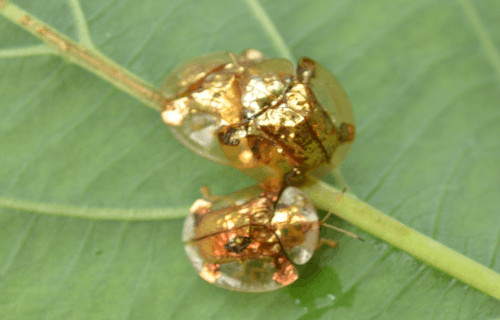
CCL: https://bit.ly/1xMszCg
Golden Tortoise Beetle Physical Description
First of all, regardless of its beauty, the gorgeous Golden Tortoise Beetle remains a rather small invertebrate. That statement holds true due to the fact that mature adults only average about 5-7 mm in length. However, unlike many related species, it displays no noticeable degree of the trait of sexual dimorphism.
In color, the awesome insect usually appears as either orange or gold in color. However, the golden hue remains by far the more common of the two color patterns. This greater tendency, therefore, serves as the source of the common name.
Furthermore, the chitin of this beetle typically displays a marvelous metallic sheen. fascinatingly, the external regions lack pigment and remain nearly transparent. The insect also has the ability to change its color to a dull brown. This represents a useful defense mechanism when under threat.
- Kingdom: Animalia
- Phylum: Arthropoda
- Class: Insecta
- Order: Coleoptera
- Family: Chrysomelidae
- Genus: Charidotella
- Species: C. sexpunctata
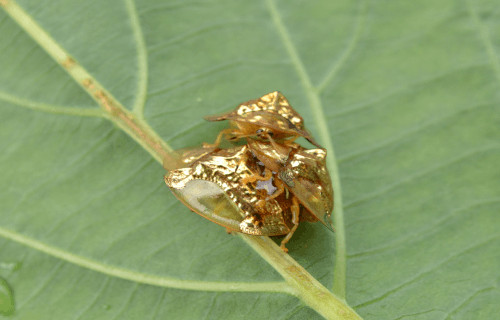
CCL: https://bit.ly/1xMszCg
Golden Tortoise Beetle Distribution, Habitat, and Ecology
The mesmerizingly beautiful Golden Tortoise Beetle only inhabits specific areas within the outer boundaries of North America. These areas of habitation primarily include the eastern and western United States. However, scattered populations also exist in the northern sections of Mexico.
The remarkable invertebrate also remains rather selective of its habitat. As a result of this characteristic, it only inhabits regions rich in sweet potato and related species. Sadly, though, this often brings it into conflict with humans, most specifically farmers. These farmers often view it as a pest.
After mating, the majority females lay their eggs on the underside of leaves. The eggs typically hatch after 4-5 weeks. Then, after a period of several weeks, the larvae turn into pupa. Subsequent to that, after a few weeks more, the pupa becomes the relatively short-lived adult of the species.
Finally, the adults themselves serve as prey for several insects. These predators most often include the tachnid fly and the eulophid wasp. Ladybirds, shield bugs, and damselflies remain among the principal predators of the larvae.
Frog Legged Beetle
Frog Legged Beetle Facts
- Our fourteenth selection for inclusion in this compendium of Earth’s Many Astounding Beetles, the Frog Legged Beetle, really jumps out at you.
- First of all, the awesome beetle remains a most unusual species of beetle. Its common name derives from the rather striking resemblance of its hind legs to those of a frog. But, these remarkable appendages are no evolutionary quirk, because they serve an important function.
- To begin with, unlike an actual frog, the invertebrate does not use the over-sized legs for jumping. Rather, these powerful legs help the remarkable insect hold tightly to the stems of various plants. In this manner, the surprising invertebrate remains firmly attached while feeding.
- Furthermore, this amazingly colored invertebrate also remains renowned for its enormous cocoons. These appear quite commonly in the jungles of the native habitat of the fascinating species. In this marvel-filled location, one most commonly finds them clinging to climbing vines.
- This beautifully colored insect also sometimes goes by the name of the kangaroo beetle. By whatever name one calls it, researchers remain unable to acquire sufficient data about it. Due to this, therefore, the IUCN does not have a listing for it, as of this moment, due to insufficient information.
Frog Legged Beetle Physical Description
One of the points of interest about the awesome Frog Legged Beetle remains its sheer size. That’s because mature specimens of the fabulous arthropod average a length of roughly 1-2 in (2.5-5 cm). The fabulous beetle also displays sexual dimorphism in terms of size. The males reach about twice the size of the females.
Given this larger than common size, it stands our from among related creatures. That fact occurs even without regard to its distinctive appearance. But, that particular characteristic of the impressive animal certainly deserves its own mention. This animal represents one of the most visually distinctive of all known beetles.
Firstly, its chitin presents a wide variety of colors with the most common one being a bright green. In fact, these colors also display as rather highly iridescent in nature. The oversized hind legs also develop far more pronounced among males of the species. Finally, the wings remain fully functional, though it rarely flies.
- Kingdom: Animalia
- Phylum: Arthropoda
- Class: Insecta
- Order: Coleoptera
- Family: Chrysomelidae
- Genus: Sagra
- Species: S. buqueti
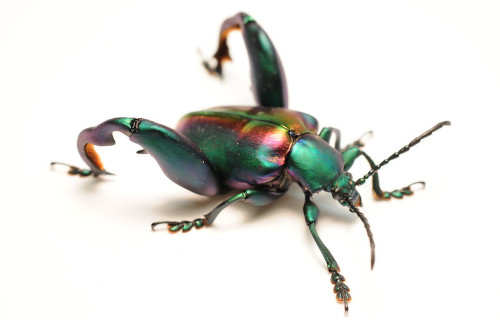
Image: Smithsonian National Museum of Natural History Insect Zoo/ Butterfly Pavilion
CCL: https://bit.ly/3ioKe14
Frog Legged Beetle Distribution, Habitat, and Ecology
The region in which the fantastic Frog Legged Beetle evolved will probably come as no surprise to many of our readers. That holds true due to the fact that it evolved as endemic to areas filled with amazing creatures. That consists of portions of Malaysia, Java, Sumatra, Borneo, and the Philippines, in Asia.
In addition, within its native range, it typically inhabits regions of the dense, tropical jungle. There, the natural coloring of the species serves to provide it with excellent natural camouflage. Also, in this location, the larva typically spins its cocoon on a wide variety of native climbing vines.
Quite unfortunately, researchers still know very little else about the life cycle of this beautiful insect in its native habitat. Although individuals have been reared in captivity and studied, their behavior patterns likely differ from those in the wild. Sadly, the nature of that natural habitat makes such studies difficult. There still remain many things we do not know about this particular one of Earth’s Many Astounding Beetles.
Christmas Beetle
Christmas Beetle Facts
- The next of our choices to represent Earth’s Many Astounding Beetles, the Christmas Beetle, will truly fascinate you.
- Most notably, the wonderful arthropod represents another of those wonderful coincidences in Nature, due to certain characteristics of its life cycle. Furthermore, it ranks as a comparatively large species of beetle. This fabulous insect also classifies as a type of scarab beetle.
- The name principally derives from its tendency to gather in swarms in the greatest numbers at around the time of Christmas. But, the brilliant coloring of a few of the different species aided in this as well.
- However, the name does not apply to a single species. That’s because people apply the same common name to all members of a specific genus. Entomologists currently place a total of 35 species presently in that genus. Thankfully, none of these presently show on the IUCN Red List.
- In addition, the various species of insect known by the common name has a protracted period of activity. Although most active around the aforementioned time of year, it also appears throughout the summer as well, albeit in smaller numbers.
- Finally, these often display a great versatility in choice of habitat. That’s because many species inhabit both rural and urban areas indiscriminately. In both regions, observers report it to be a noisy and clumsy flier.
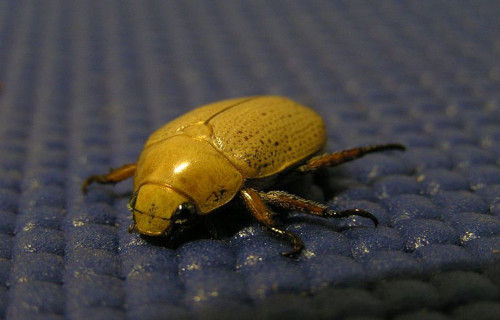
CCL: https://bit.ly/380gMHx
Christmas Beetle Physical Description
First of all, the term Christmas Beetle applies to a large number of separate species. Therefore, physical differences obviously exist between the various members of the group. However, certain basic physical characteristics exist throughout the genus.
Firstly, overall the various members of this amazing group rank as relatively large types of beetles. That holds true due to the fact that the separate species attain average maximum lengths that range from 0.79 – 1.2 in (20 – 30 mm). Yet, none of these arthropods display any noticeable degree of sexual dimorphism.
However, the different forms of Christmas Beetle do vary in terms of appearance. That’s because these display differing patterns of color. The majority of them present an overall color consisting of either dark or light brown. But, a few species display the dazzling shades of iridescent green or greenish-yellow that helped earned the genus its common name.
- Kingdom: Animalia
- Phylum: Arthropoda
- Class: Insecta
- Order: Coleoptera
- Family: Scarabaeidae
- Genus: Anoplognathus
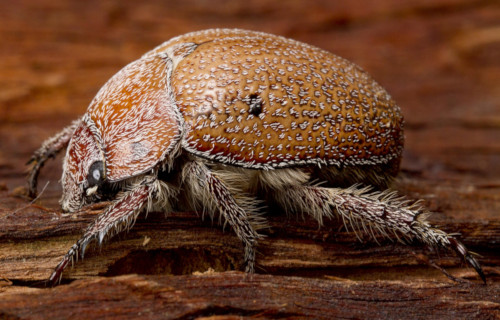
CCL: https://bit.ly/2LeJpa8
Christmas Beetle Distribution, Habtat, and Ecology
Firstly, all of the different members of the genus collectively known as the Christmas Beetle all inhabit either of two regions. These two regions of the world consist of the continent of Australia, and the country of South Africa.
Furthermore, all of them live in the same general type of environment. The larvae of this arthropod live underground. These feed on decaying vegetation and various plant roots. Of these, it appears to prefer endemic grasses but will also feed on local lawns, pastures, and even crops.
At the height of its swarming, this can pose a significant threat to local farmers, as well as to the lawns of homeowners. The larvae of the Christmas Beetle, regardless of individual species, move to the surface in early spring and emerge as adults a few weeks later.
Typically, this mass emergence begins following the spring storms common to the local habitat. This softens the ground, making the emergence of the horde of insects easier. Among adults, the preferred food appears to be eucalyptus leaves.
Multicolored Asian Lady Beetle
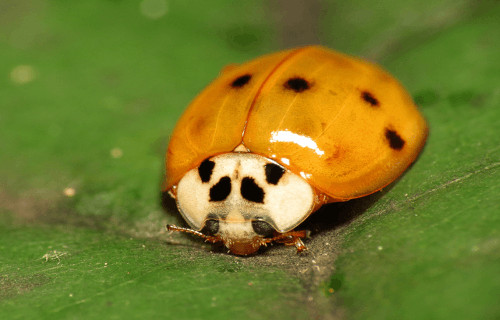
CCL: https://bit.ly/1ryPA8o
Multicolored Asian Lady Beetle Facts
- The sixteenth of our selections for addition to this article about Earth’s Many Astounding Beetles is the remarkable Multicolored Asian Lady Beetle.
- First of all, the somewhat lengthy term serves as the common name for a remarkable species of beetle. However, this magnificent insect has a particularly bad reputation. That’s because it remains considered as one of the most invasive species on the entire planet.
- For starters, unlike most invertebrates, this truly remarkable insect often produces multiple generations in a single year. In addition, various human actions rapidly spread it to virtually every part of the globe. Since this creature breeds prolifically, it quickly outnumbers native species. This, therefore, frequently upsets the natural balance in these regions.
- Furthermore, in the United States in 1978, people introduced them as biological control agents. However, the beetles have now, not surprisingly, become an invasive pest in portions of the country. That’s because the irrepressible insect also often inundates homes in large numbers.
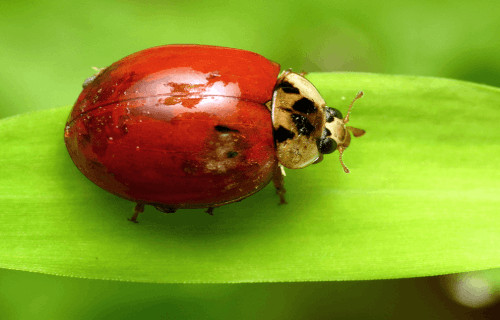
CCL: https://bit.ly/1ryPA8o
Multicolored Asian Lady Beetle Physical Description
Though the impressive animal constitutes a rather small variety of insect, the Multicolored Asian Lady Beetle still stands out from the crowd. That’s because, the truly awesome arthropod actually measures slightly larger than other beetles of the type often colloquially known as ladybugs.
The variety also attains an average length of roughly 0.28 in (7 mm), and a width of about 0.22 in (5.5 mm). It also distinguishes itself from many related species in another way. That holds true due to the fact that it displays no appreciable degree of the principle of sexual dimorphism.
Furthermore, its body develops roughly oval in shape. Also, the head typically hides under the pronotum, which generally resembles a disk. Lastly, the Multicolored Asian Lady Beetle also displays a combination of red and yellow colors with anywhere from 0-19 small black spots as well.
- Kingdom: Animalia
- Phylum: Arthropoda
- Class: Insecta
- Order: Coleoptera
- Family: Coccinellidae
- Genus: Harmonia
- Species: H. axyridis
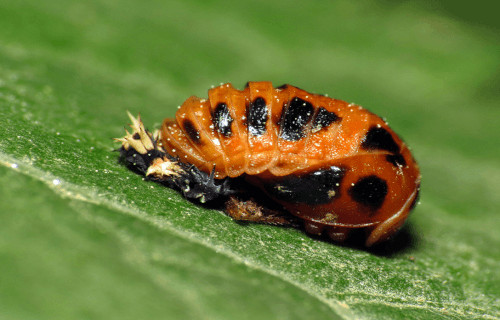
CCL: https://bit.ly/1ryPA8o
Multicolored Asian Lady Beetle Distribution, Habitat, and Ecology
The native distribution of the fascinating Multicolored Asian Lady Beetle covers a rather wide swathe of eastern Asia. This comparatively extensive range extends from portions of Siberia to Japan, China, and Taiwan.
However, the ill-fated attempts to utilize the creature to control aphids in North America led to it also becoming established in that country as well. The remarkable insect now inhabits all portions of the continental United States, and portions of Canada.
In addition, its natural dwelling places indicate a preference for a particular variety of trees. However, the incredibly adaptable insect readily makes use of what Nature provides. Therefore, virtually any vegetation will be utilized if need be.
Further, the insect primarily feeds on numerous scale insects and aphids. Relative to its size, these lovely creatures nevertheless remain voracious predators. For its own defense, it releases a noxious chemical to deter would be predators.
Finally, this awesome insect remains an important center of a cultural belief in parts of its range, even today. That’s because many people hold to the belief that its larval form can predict the severity of the coming winter. It supposedly does this based on the particular color patterns it displays.
Great Capricorn Beetle
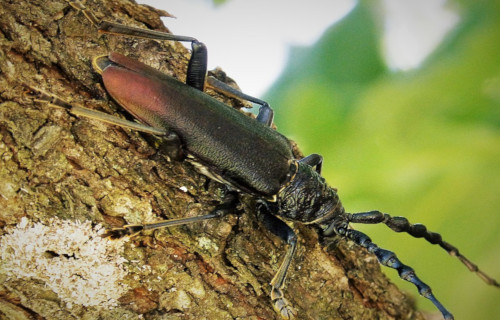
CCL: https://bit.ly/2EdyAkC
Great Capricorn Beetle Facts
- The next selection for inclusion in this compendium of Earth’s Many Astounding beetles is the fabulous Great Capricorn Beetle.
- Firstly, the truly physically impressive animal qualifies as a member of the Longhorn family. Furthermore, in certain portions of its natural range, the amazing invertebrate currently remains considered the largest extant beetle. This interesting fact holds true partly because of the great size of its antennae. These really set it apart.
- Furthermore, the current population of this remarkable arthropod appears to be fairly stable overall. In this, the surprising creature quite fortunately stands out from many related species. However, its population density in specific portions of its endemic range appears to be declining. It also presently appears in the greatest numbers in France and Bulgaria.
- But sadly, not all is well with the marvelous beetle. That’s because, even in the various locations in which it still appears in abundance, it remains considered at risk. Like many other species in the world, the ever-growing risks of habitat loss and climate change appear to be its greatest threats. Due to these concerns the IUCN presently lists it as Vulnerable on its Red List of Threatened Species.
Great Capricorn Beetle Physical Description
First of all, the Great Capricorn Beetle does have one thing in common with many other related species. That pertains to the general shape of the body itself. In fact, the creature evolved a generally elongated body shape. Not only that, but adults often attain the impressive body length of as much as 2.2 in (5.6 cm). This tendency holds true for members of both sexes.
Most notably, its antennae represent its most distinguishing physical feature. The astounding species does display the trait of sexual dimorphism. But, in it case, it does so in terms of antennae length. Among females, these roughly equal the length of the body. Among males, however, these often equal as much as twice the length of the body itself.
Further, in coloring, individuals primarily display the color black. This holds true of both the body and legs. However, the elytra of the arthropod sometimes presents a reddish-brown shade on the tips. The purpose this remains undetermined by entomologist, despite extensive study.
Finally, it also possesses a row of comparatively tough ridges along the abdomen. These it vigorously rubs against a hard surface, such as a tree branch. The insect does this to produce a surprisingly loud stridulation. This it uses to attract potential mates, during mating season.
- Kingdom: Animalia
- Phylum: Arthropoda
- Class: Insecta
- Order: Coleoptera
- Family: Cerambycidae
- Genus: Cerambyx
- Species: C. cerdo
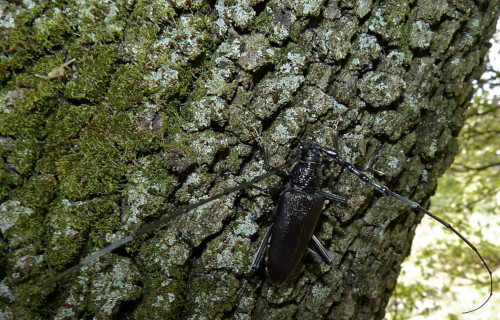
CCL: https://bit.ly/2RVmB3c
Great Capricorn Beetle Distribution, Habitat, and Ecology
First of all, the Great Capricorn Beetle inhabits an amazingly wide range of Europe. This astonishing member of the Coleoptera Order also appears in certain parts of Africa. In addition, within that natural range, it evolved as primarily endemic to low altitude forests. Only a small percentage of individuals of this species appear outside of this altitude range.
However, it has adapted to gardens, orchards, farmland, and yards as well. This insect practices great selectivity in the trees it inhabits. Specimens appear almost exclusively on various types of deciduous trees. Furthermore, the invertebrate generally prefers old and decaying trees. That’s because these serve as both a source of food and location for eggs.
Additionally, its diet remains entirely saproxylic in nature. Most individuals also commonly live, feed, and reproduce in the same location they hatched in. This characteristic leads to its being considered a harmful pest in certain parts of its range. Another reason is the fact that females lay as many as 300 eggs after mating.
Further, it does have some evolutionary differences between it and other similar species, however. That holds true partly due to the fact that both genders remain weak fliers. Due to this, it rarely takes flight. Finally, it possesses a typical lifespan ranging from 3-5 years, depending on environmental factors.
Earth’s Many Astounding Beetles
We sincerely hope that you have enjoyed this article dealing with Earth’s Many Astounding Beetles. These amazing arthropods play important, often pivotal, roles in their local ecosystems. Sadly, however, many of these fabulous creatures now face severe dangers from the changing world around them. It remains up to us to do all we can to preserve these marvelous species, for our posterity.
Check out our other articles on 7 Spectacular Geological Marvels of Europe, Breathtaking Primates of the World, 8 Truly Monumental Orchids, 7 Awe-Inspiring Ocean Crustaceans
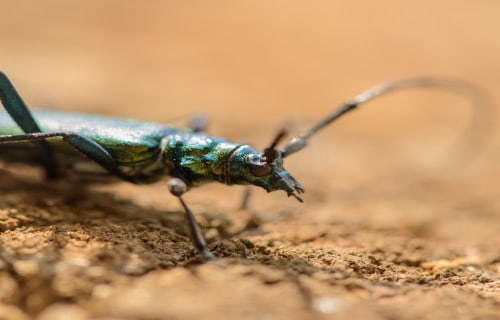
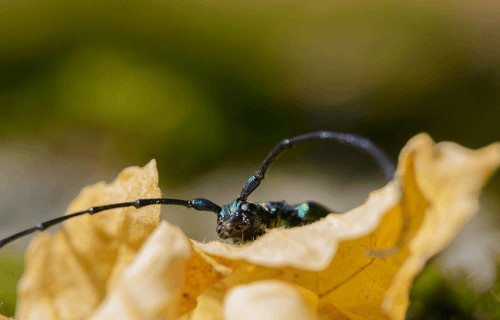
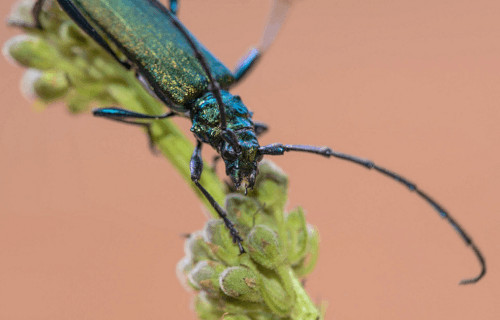

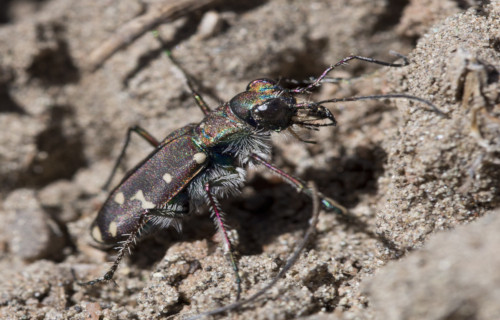
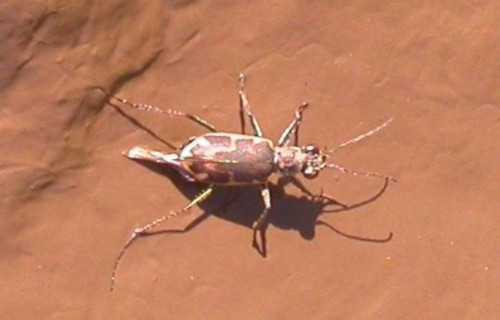
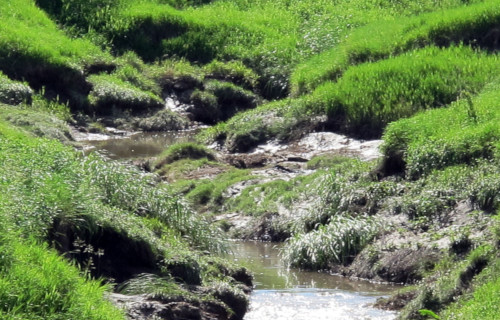
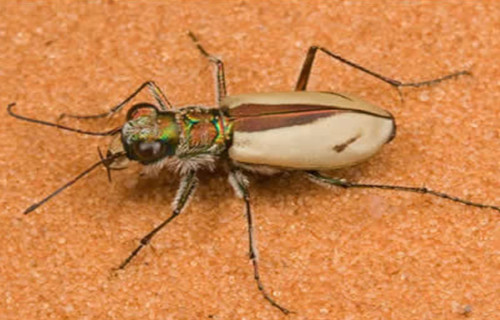
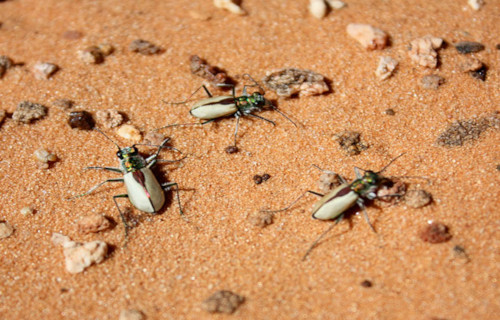
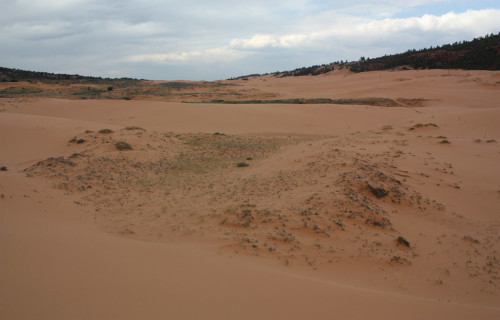
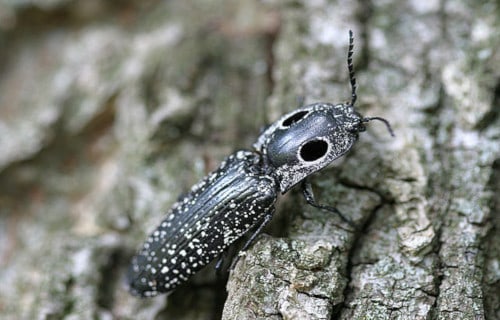
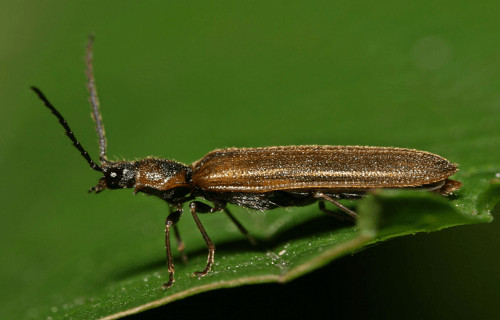
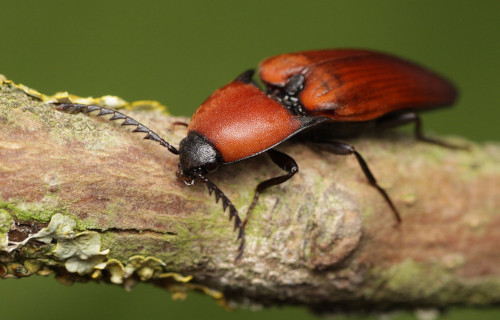
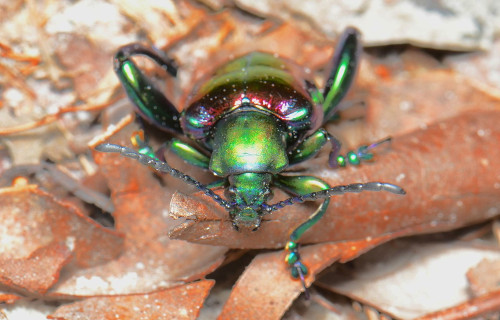
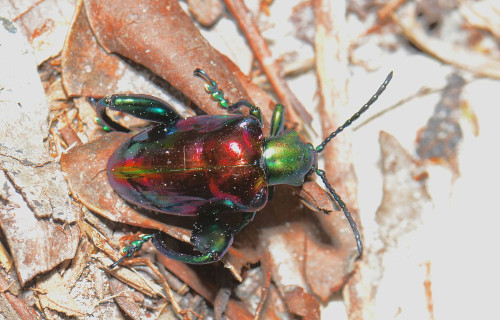
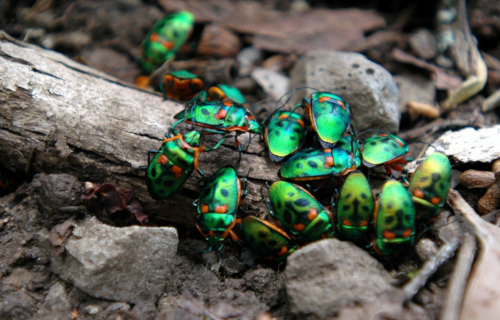
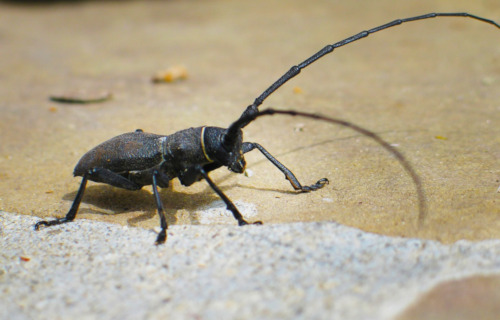









Leave a Reply